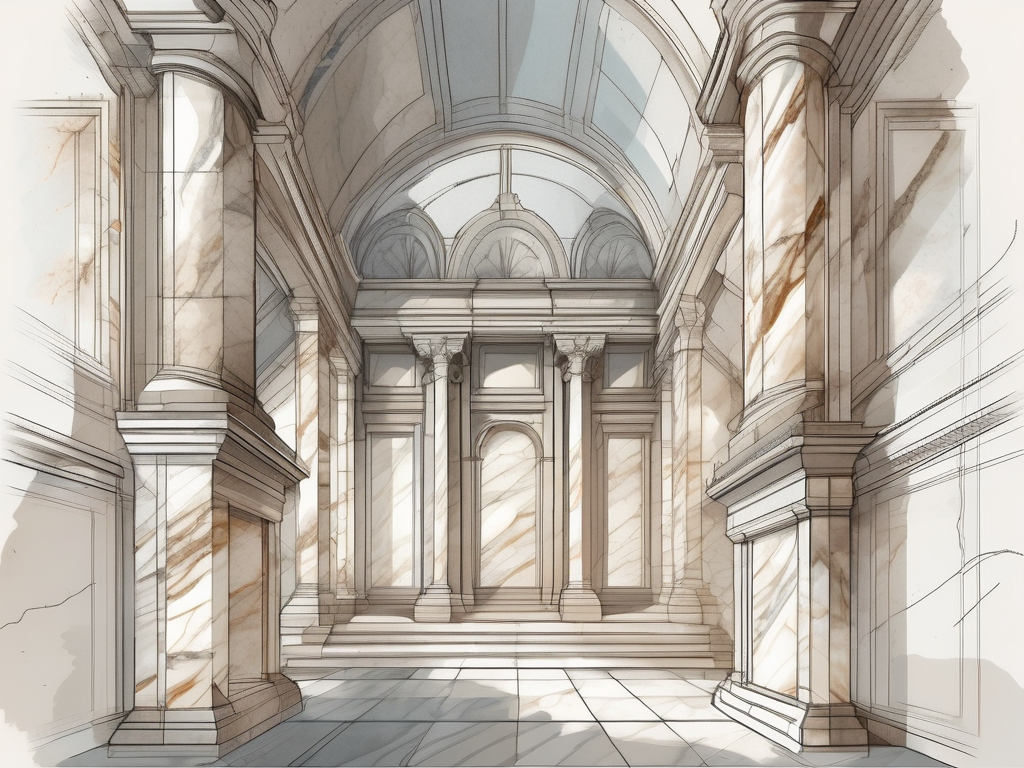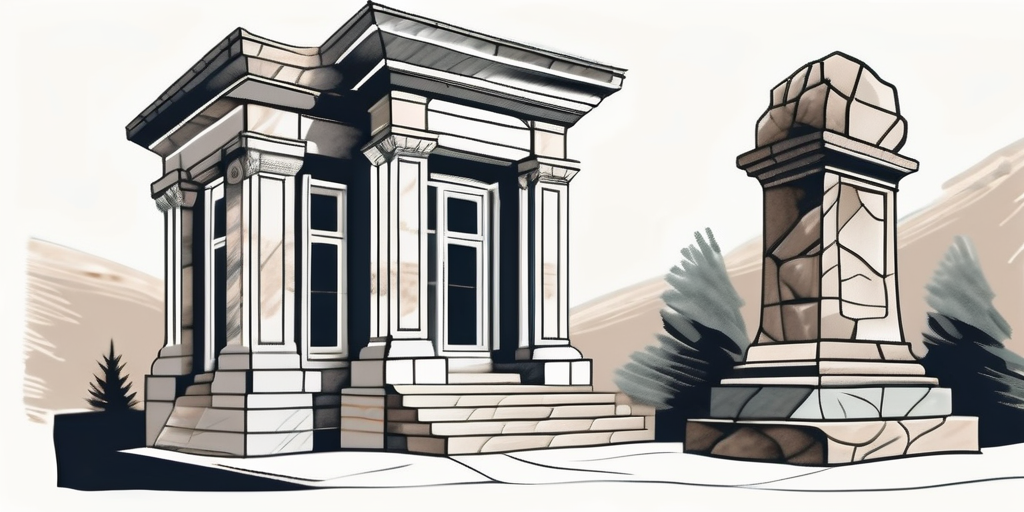Discover the Best High-Quality Stone for Architectural Heritage Projects
Architectural heritage projects require careful consideration when it comes to selecting the right materials. Stone, in particular, plays a crucial role in preserving the historical significance and aesthetic appeal of these structures. Understanding the importance of using high-quality stone is essential to ensure the longevity and authenticity of architectural heritage. In this article, we will explore the role of stone in historical architecture, the types of high-quality stones available, the factors to consider in stone selection, and the preservation and maintenance of stone in heritage architecture. Additionally, we will delve into the future of stone in architectural heritage, discussing innovations in stone quarrying, processing, and sustainable practices.
Understanding the Importance of Stone in Architectural Heritage
Stone has been an integral part of architectural heritage for centuries. Its durability, versatility, and timeless beauty have made it a preferred choice for creating structures that withstand the test of time. Stone not only serves as a building material but also tells a story of the past. From ancient temples to medieval castles, the use of stone in historical architecture speaks volumes about the civilisations that came before us.
The Role of Stone in Historical Architecture
Stone has played a significant role in historical architecture, serving as a symbol of strength, endurance, and craftsmanship. It has been used to construct iconic landmarks, such as the Great Pyramids of Giza and the Colosseum in Rome. The use of stone in these structures not only showcases the skill of the artisans but also contributes to their visual grandeur. Additionally, stone has been relied upon for its ability to withstand weathering and erosion, making it an ideal material for structures that need to withstand the test of time.
Why Quality Matters in Heritage Stone Selection
When it comes to architectural heritage projects, the quality of the stone used is paramount. High-quality stone ensures the authenticity and longevity of the structure, maintaining its historical integrity. Inferior stone may deteriorate quickly or fail to capture the essence of the original design, undermining the value and significance of the heritage. Therefore, selecting the right stone with excellent quality is essential to preserve architectural heritage for future generations to appreciate and study.
One fascinating aspect of stone in architectural heritage is the variety of types and colours available. Each region has its own unique geological composition, resulting in a diverse range of stones with distinct characteristics. For example, the warm golden hues of sandstone found in Rajasthan, India, have been used to create intricate carvings in ancient temples. In contrast, the cool gray tones of granite from the Scottish Highlands have been employed in the construction of imposing castles. The choice of stone not only depends on its physical properties but also on the cultural and historical context of the region.
Furthermore, the craftsmanship involved in working with stone is a testament to human ingenuity and skill. Stone masons and sculptors throughout history have honed their craft, pushing the boundaries of what is possible with this natural material. From delicate filigree carvings to massive stone arches, the artistry and precision required to shape and manipulate stone are awe-inspiring. The intricate details and patterns that can be achieved with stone have captivated the imaginations of architects and designers for centuries.
Types of High-Quality Stones for Architectural Heritage
When it comes to architectural heritage projects, the choice of stone plays a crucial role in determining the overall aesthetic appeal and longevity of the structure. There are various types of high-quality stones that are commonly used, each with its own unique characteristics and qualities. In addition to the three popular choices mentioned earlier, let’s explore a couple more options:
Marble: The Epitome of Luxury
Marble, with its timeless beauty and luxurious appeal, has been a favourite among architects and designers for centuries. Known for its distinctive veining patterns and lustrous finish, marble adds an air of sophistication to any architectural masterpiece. From grand palaces to iconic sculptures, marble has been used to create breathtaking works of art that exude opulence and grandeur.
One of the remarkable qualities of marble is its ability to reflect light, giving it a radiant glow that enhances the overall ambiance of a space. Whether it’s used for flooring, countertops, or intricate detailing, marble never fails to captivate with its elegance and grace.
Travertine: A Natural Wonder
Travertine, a type of limestone formed by mineral-rich hot springs, is a stone that boasts both beauty and durability. Its unique porous texture and earthy tones give it a rustic charm that is highly sought after in architectural heritage projects. From ancient Roman structures to modern-day villas, travertine has been used to create stunning facades and outdoor spaces that blend seamlessly with nature.
What sets travertine apart is its ability to age gracefully, developing a patina over time that adds character and depth to the stone. Whether it’s used for exterior cladding or interior accents, travertine brings a touch of natural beauty that harmonises with its surroundings.
Choosing the right stone for an architectural heritage project is not just about aesthetics; it’s also about preserving the legacy of the past while ensuring a sustainable future. Each stone mentioned here offers a unique combination of qualities that make it suitable for different architectural styles and project requirements. So, whether it’s the durability of granite, the elegance of limestone, the versatility of sandstone, the luxury of marble, or the natural wonder of travertine, there is a high-quality stone out there waiting to be shaped into a masterpiece.
Selecting the Right Stone for Your Project
Choosing the right stone for your architectural heritage project requires careful consideration of various factors. Here are some key aspects to take into account:
When embarking on a project that involves selecting the perfect stone, it is essential to delve into a comprehensive analysis of the different types of stones available. Each type possesses unique characteristics that can significantly impact the overall look and longevity of the structure. From the timeless elegance of marble to the rugged durability of granite, understanding the distinct qualities of each stone is crucial in making an informed decision.
Factors to Consider in Stone Selection
When selecting the stone, factors such as durability, weather resistance, availability, and compatibility with the existing structures should be evaluated. The stone should be able to withstand the local climate conditions, ensuring that the architectural heritage remains intact and resilient against the elements.
Furthermore, exploring the historical significance of different types of stones can add a layer of depth to the decision-making process. Some stones may have been favoured by renowned architects of the past for their unique properties, contributing to the authenticity and charm of heritage buildings. By delving into the historical context of various stones, you can establish a profound connection between the past and the present, infusing your project with a rich narrative.
Matching Stone to Architectural Style
Another crucial consideration is matching the stone to the architectural style of the heritage project. Whether it’s a Gothic cathedral or a Neoclassical mansion, the stone should evoke the essence of the era with distinguishable differences for heritage records – demonstrating cohesion between old and new. Consulting with experts in historical architecture can provide valuable insights and ensure a cohesive design approach.
Preservation and Maintenance of Stone in Heritage Architecture
Preserving and maintaining stone structures in architectural heritage requires dedicated care and attention. Here are some key practices:
Cleaning and Caring for Stone Structures
Regular cleaning and maintenance are essential to prevent the build-up of dirt, moss, and other pollutants that can compromise the integrity of the stone. Specialised cleaning techniques and gentle methods must be employed to ensure that the stone surface is not damaged during the restoration process.
Long-term Preservation Techniques for Stone
In addition to routine maintenance, long-term preservation techniques are crucial in ensuring the longevity of stone structures. These can include applying protective coatings, monitoring moisture levels, and implementing preventive measures against factors that may cause deterioration, such as pollution, biological growth, and natural disasters.
The Future of Stone in Architectural Heritage
The use of stone in architectural heritage continues to evolve, with advancements in quarrying, processing, and sustainable practices. Let’s explore some future trends:
Innovations in Stone Quarrying and Processing
New technologies and techniques are emerging in the field of stone quarrying and processing. Advanced machinery and equipment allow for more precise extraction and cutting, ensuring minimal waste and improved stone quality. Additionally, digital modelling and 3D printing offer exciting possibilities for creating intricate stone elements with precision and efficiency.
Sustainable Practices in Stone Use
As environmental concerns grow, the stone industry is embracing sustainable practices. From utilising recycled stone to reducing energy consumption in manufacturing processes, sustainable stone options are becoming increasingly popular. This shift towards eco-friendly practices aligns with the principles of architectural heritage conservation, promoting the preservation of natural resources for future generations.
In conclusion, selecting the best high-quality stone plays a critical role in architectural heritage projects. Understanding the significance of stone in historical architecture, exploring the various types available, considering key factors in stone selection, and implementing preservation and maintenance techniques are vital for the long-term preservation of architectural heritage. Furthermore, embracing innovations and sustainable practices ensures that stone continues to be a cornerstone of architectural heritage for generations to come.
Bring Your Architectural Heritage Vision to Life with A F Jones Stonemasons
At A F Jones Stonemasons, we understand the pivotal role high-quality stone plays in architectural heritage projects. With over 160 years of expertise, we offer a complete service that marries deep-seated knowledge and heritage skills with cutting-edge technology. Whether you’re looking to preserve the legacy of the past or create a new masterpiece, our in-house team is equipped to support your project from concept to installation. Based in Oxfordshire & Berkshire and serving the south of England and London, we’re ready to tackle projects of any scale, from grand historical restorations to bespoke private commissions. Make an enquiry today to discover how we can help you realise the true potential of stone in your architectural heritage project.
Frequently Asked Questions
- Why is the selection of high-quality stone crucial for architectural heritage projects? Selecting high-quality stone is essential to maintain the authenticity, integrity, and longevity of architectural heritage projects, ensuring that these structures withstand the test of time while preserving historical accuracy.
- What types of stone are recommended for architectural heritage restoration? Marble, travertine, limestone, granite, and sandstone are preferred for their durability, aesthetic appeal, and compatibility with historical architecture, each offering unique benefits depending on the project’s specific requirements.
- How does A F Jones Stonemasons ensure the quality of stone used in heritage projects? A F Jones employs rigorous selection criteria, advanced quarrying techniques, and precise processing to ensure that only the highest quality stone is used, aligning with the structural and aesthetic demands of each heritage project.
- What are the best practices for preserving and maintaining stone in heritage architecture? Regular cleaning, applying protective treatments, and employing restoration techniques that are sympathetic to the original materials and methods are crucial for preserving stone in heritage buildings.
- How are modern technologies enhancing the use of stone in architectural heritage? Modern technologies like 3D CAD modeling and CNC machining enhance the precision and efficiency of stone processing, allowing for intricate designs that are consistent with historical accuracy yet achieved with modern efficiency.




